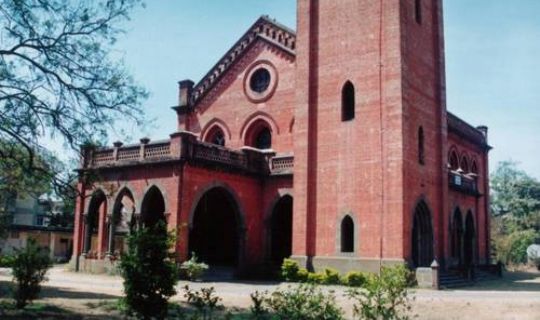
India, Punes Ohel David turns 150
Ohel David (Lal Deval) synagogue, Punes most well known landmark celebrated its hundred and fiftieth birthday on November 2. The celebrations were marked with the presence of the Governor of Maharashtra, Shri C. Vidyasagar Rao, and the direct descendants of the synagogues founder, David Sassoon (1792-1864).
Sifra Lentin, Mumbai
Rabbi Yacob Menashe and his sister Dr Sarah Menashe are five generations removed from the founder of this synagogue through his eldest son Sir Albert Sassoon. For the city of Mumbai, Sir Albert, is most well known as the builder of the Sassoon Docks (Colaba).
The celebrations attracted the local Indian Jewish communities, not just from Pune but also Mumbai and Thane. The largest congregation to attend came from the Thane Synagogue, which today has 1800 members, being the largest settlement of Jews in India today.
However, most of the local Jews who attended were largely from the older Bene-Israel (Children of Israel) community, with very few from David Sassoon’s own West Asian Baghdadi Jewish community. Immigration to England, Israel, the United States, and Australia in the 1950s and 60s have depleted the numbers of this community in India.
One original resident of Pune’s Baghdadi Jewish community is Mr Solomon Sopher, president of the Sassoon Trusts, and his sister Mozelle. An old friend of Sopher, who also spoke on this occasion, was Pune resident, Mr Cyrus Poonawalla, who recalled first meeting his friend 60 years ago in the Ohel David Synagogue. This was Poonawalla’s first visit to Lal Deval.
David Sassoon & Pune
Pune itself once had a fairly large resident Baghdadi Jewish community; in fact as late as the 1980s this community was well-known by local Puneites for owning three large hosiery department stores in the city.
In the days of David Sassoon, when travel between Mumbai and Pune was arduous (the railway connection between the two cities was completed only in 1863), the Sassoon family along with other Baghdadi families from Mumbai would migrate to the more salubrious climate of Pune during summer and the monsoon months (May to November).
Pune in those days, before the development of the hill stations of Mahabaleshwar and Matheran, was the `Shimla’ summer getaway for residents’ of Mumbai. These seven months coincided with the Jewish High Holy days, and was probably the reason why David Sassoon decided to build a synagogue in Pune.
It is the sheer size and scale of this beautiful synagogue, the largest in Asia and the second largest in the world that impresses one. It leads one to conclude that there existed a large enough Baghdadi Jewish congregation in the mid-19th century to actually fill up this synagogue.
The synagogue is built in the English Gothic style in brick and Deccan trap stone. The most outstanding feature of the synagogue is its 90 foot clock tower, adjoining its main entrance, which resembles an obelisk, as it is surmounted by a spire. This is the feature that once stood out like a beacon in Pune just ten years ago. Before high rise towers began obliterating old landmarks.
Another notable feature is the mausoleum of David Sassoon, built in the synagogue compound. Sassoon died in Pune on November 5, 1864, exactly one year after laying the foundation stone of the synagogue. Lal Deval was consecrated four years later on September 29, 1867.
Today, the Ohel David Synagogue is not just a monument, but a living legacy of a once thriving Baghdadi Jewish community of Pune. Sabbath prayers and festivals are conducted by a hazan (reader), and the few resident Jews (approximately 135) ensure that Pune’s Jewish heritage stays alive.
* Sifra (Samuel) Lentin is a Mumbai-based writer and historian, and the Mumbai History Fellow at Gateway House: Indian Council on Global Relations. She graduated in English from Elphinstone College, Mumbai, and went on to complete her Bachelor’s in General Law (BGL) from the Government Law College, Mumbai. She has written for a wide spectrum of Bombay-based newspapers and magazines – most notably Mid-Day, The Times of India, The Sunday Observer, Hindustan Times, Taj Magazine, JetWings and One India One People. She has also been published in two books: MARG’s ‘Indian Jewish Heritage – Ritual, Life-Cycle & Art’(2002), and One India One People’s book on Communities of India (2006). Her recent work has been the Indian Navy’s Western Fleet coffee table book ‘A Salute To The Sword Arm – A Photo Essay On The Western Fleet’ (April 2007). She is also on the Board of Trustees of the Sir Jacob Sassoon School (Byculla, Mumbai).
Related Newsss ss













